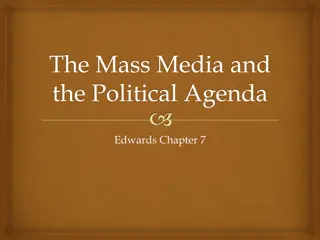Understanding the Emergence of Genres in Media: A Study of Innovation and Evolution
The emergence of genres in media is a fascinating process that involves the development of new types of content within both traditional and digital platforms. From the rapid rise of blogging to the evolution of genres in personal media like selfies, researchers explore how innovation and technology play a crucial role in shaping and redefining genres. By analyzing the relationship between existing genres and the creation of new ones, scholars shed light on the interconnected nature of genre adaptation and emergence. This study delves into the various features and characteristics that contribute to the formation of novel genres, highlighting the impact of linguistic form, modality, rhetorical strategies, content, and practices on genre development. Additionally, the properties of digital media are identified as key elements that allow for innovative ways of disaggregating and recombining features to construct fresh genres that meet evolving audience expectations.
Download Presentation

Please find below an Image/Link to download the presentation.
The content on the website is provided AS IS for your information and personal use only. It may not be sold, licensed, or shared on other websites without obtaining consent from the author. Download presentation by click this link. If you encounter any issues during the download, it is possible that the publisher has removed the file from their server.
E N D
Presentation Transcript
The practice of blogging seemed to emerge quickly and decisively from a rather specialized high-tech community to become a widely recognized and widely shared set of expectations expressed in the activity of blogging, as well as in evaluations, link patterns, and metacommentary. Blogs seemed to be a new genre, one that had emerged with dramatic rapidity from new technological conditions.
The word emergence refers to the development of what seem to be new genres in both new and old media. For example, L ders et al. studied emerging personal media genres such as the camphone self-portrait (now infamous as the selfie ), suggesting that this genre both emerges from bourgeois portrait traditions and at the same time offers new ways and roles of visual self-representations [that] have changed the act of looking
They comment on the way that the emerging genre is a set of repeated acts within a regulatory frame of references but also is recognized as departing from them. It is connected to and yet distinct from a tradition.
Crowston and Williams, information architects, distinguish between genre adaptation and genre emergence , where adaptation acknowledges a relationship with existing genres and emergence denotes the creation of new ones, recognized as distinct and named as such.
Christine Tardy offers five general features where innovation can produce revised or new genres: linguistic and textual form Modality Rhetorical aims and strategies Content Practice, or implementation.
Gunnar Liestl ( 2006 ) has suggested that the properties of digital media allow for the disaggregation and recombination of features in new ways that can be strategically deployed in the construction of new genres.
Genre Change in New Media Genre Change in New Media New media studies reflect genres seem to proliferate constantly. In most of the studies, the new technological medium itself is not understood as the primary origin of genre change, except in--- Creating new conditions of possibility new affordances that are then adapted, combined, and extended in actual use to serve particular social needs Which themselves are constantly undergoing change.
Can we answer ??? Genres developed because of need vs. technological advancements created need.
Different academic disciplines have focused on genres in different cultural domains: the favored objects of literary studies and film and television studies are obvious. But there are different ways in which genres are adopted and accepted.
If we examine the ways that genres belong to domains and to the discourse communities within these domains, we can begin to account for the different ways that genres emerge and evolve within their communities.
The preliminary classification of these relationships by scholars is based on : Audience producer relationship the situation or setting the rhetorical demand or function being served and the way(s) that genres are taken up (or not) Such uptake is a marker of the acceptance or success of a genre.
Four classifications of genres Marketed or Commercial Genres- In film studies, television studies, and literary studies, we find this genre. These show fairly strong distinctions between producer and consumer, especially where these roles are not easily reversible, as when the producer is a profit- making corporation. These genres emerge and survive if they offer something that sells, either to a mass market or to an audience with more specialized aesthetic criteria.
Administered genres- These genres are found in corporate and organizational, government and bureaucratic settings, including education; such genres are social interactions that are formalized in particular ways, often literally through forms; they occur in situations where those with institutional authority (such as government regulators, teachers, or managers) can impose or require certain ways of doing things. In these genres, the exigence is imposed, or dictated, sometimes defined by law or regulation, sometimes by administrative preference, and ostensibly by the functional needs of the organization. The genre comes into being to suit those in power, those with the authority to regulate the social and symbolic interactions of others.
Institutional genres,- which we find in science, journalism, and religion institutions with strong conventions and sanctions that have developed historically with the power of tradition, social status, and mutual expectation. For these genres, antecedents can be strong constraints, because they represent the authorizing force of the institution.
vernacular genres- in situations where users have few institutional or administrative constraints and can collectively create a way of addressing a shared exigence. Example- personal blogs Indeed, the new technologies that have helped saturate our life-world with marketed media products have also enabled more people to become active producers. New technologies give consumers the tools of production and of dissemination, which enable them through collective practice to create new vernacular genres like fan-fiction, shreds videos, music mashups.
People have the means to do new kinds of things and to do them collectively, so that they can rapidly become joint modes of social action holistically identifiable, socially meaningful, and reproducible. Vernacular genres are Spinuzzi s unofficial genres ( 2003 ), or what Frow calls folk classifi cations or folksonomies . Vernacular genres emerge and survive when a community fi nds a confi guration of features that satisfies or pleases those who interact together, addressing some communally recognized exigence.
These four categories also help locate the variety of influences we have seen on the processes of genre emergence and stabilization. We see that genres emerge not only from technological change and media transformation but also from marketing and commercial constraints, the conditions of production, antecedent genres, sociocultural and psychosocial change, influential individuals and their goals and commitments, critical appraisal and deliberate recombination, play and experimentation, and institutional and political change.























